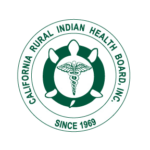NextGen and Electronic Health Records
Our goal is to improve the quality and efficiency of care delivered to the Indians of California by bringing patient information and clinical knowledge together at the point-of-care, and establishing efficient business practices to improve the long term viability of Tribal Health Programs.
CRIHB provides technical assistance and support in the implementation of EPM and EHR, including:
- Implementation planning
- Change management coaching
- Onsite assistance during implementation
- Ongoing maintenance and system improvement.
- Second line IT and EHR support, resolving the more complex problems that cannot be
addressed by the local IT person or superusers. - Vendor relations and contracting
- Maintenance of a Tribal NextGen user group open to all tribal health programs using
NextGen.
We are continually improving our processes and the assistance we provide as a result of our experience at each implementation. All implementations were funded by grants, which funded the purchase of the software and some of the hardware. Without this funding, the implementations could not have happened. In addition to being expensive, EHR implementation is an intensive process that affects every aspect of a clinic’s operations and working relationships. Our primary care clinics do not have the infrastructure to do this alone; CRIHB provides mentoring, assists leadership, and provides technical assistance services and coordination to augment the clinics’ limited resources
.

Our Goals
Our goal is to improve tribal health programs in four (4) key areas:
- Business Efficiencies – By implementing the NextGen EPM, our Tribal Health Programs will have the business tools, and training, to improve their business processes. The EHR will automate the clinical process to simultaneously decrease costs of care, while improving the quality and outcomes of that care.
- Decision Making – Our long term project will improve the health of the community by collecting data in a structured format at the point of care, and making that data available to authorized users in a real time environment.
- Health Outcomes – We will improve safety by reducing medical errors and increase quality of patient care by having data available at the point of care.
- Advocacy – Having information about the health needs of the population available will provide data needed to build collaborations, advocate for new services, and advocate for new funding from the state or federal government.
EHR technical assistance is available to contracted tribal programs which have made arrangements with CRIHB to receive services.
Resource and Patient Management System (RPMS) & Administrative Resource Management Systems (ARMS)
ARMS and RPMS goal:
The Administrative Resource Management System (ARMS) is a financial and resource management application package developed by the Indian Health Service (IHS). An ARM is a subsystem of the Resource and Patient Management System (RPMS). This application runs on computer at IHS Facilities as well as tribal administrative offices. ARMS complement the RPMS goal of integrating patient care and costs data.
Security and User Identification:
Site managers are responsible for assigning access levels and verification codes to each person selected as an ARMS user. These codes serve several functions. It is important that only authorized individual’s access the information stored in ARMS. Easy identification is another function of the access code. ARMS can take individual users directly to the menus they frequently use.
It is CRIHB’s EHR Systems Specialist responsibility to maintain, update, install, and troubleshoot issues, access and report process tracking of our member tribal programs. Reporting and Exporting of data to Indian Health Services include Clinical Reporting System (CRS) which is a software application designed for local and Area monitoring of clinical performance measures. Because definitions of clinical performance measures can change every year CRS will be updated and released annually.
Government Performance and Results Act (GPRA) requires Federal agencies to demonstrate that they are using their funds effectively toward meeting their missions. The law requires agencies to have both a 5-year Strategic Plan in place and to submit Annual Performance Plans describing specifically what the agency intends to accomplish toward those goals with their annual budget. CRIHB EHR Systems Specialist insures that the Application Database is up to date in order to accurately report such requirements.
Appropriately for healthcare organization, most IHS GPRA measures describe clinic treatment and prevention measures. The performance measures address the most significant health problems facing the American Indian and Alaska Native (AI-AM) population as identified by representatives of the local I/T/U programs as well as management areas of the Presidents Management Agenda. For FY 2008, the IHS has 35 GPRA measure in three main categories: Treatment (20), Prevention (12) and Capital Programming/Infrastructure (3) characterized by “Outcome Measures”; “Output Measures”; “Efficiency Measures”.
Contact
Alana Perez-White
Health Systems Development Director
awhite@crihb.org

